Ponds add beauty and interest to garden spaces and can provide food and habitat to a number of different animals, including some pollinators, amphibians, and birds. But if you have a small yard, you may not think creating a water garden is possible. The good news is that though ponds can be quite large, gardeners can keep mini container water gardens in even the smallest spaces with handy DIY pond kits.

Once you’ve decided to construct your own mini pond, you can choose which bells and whistles you’d like to add, such as a fountain, bubbler, or waterfall. After that, if you have the space for it, you may want to add fish or other aquatic animals. And, of course, if you love gardening, you’ll want to add a few plants too!
In this guide, we’ve gathered together some of our favorite aquatic plants that will grow well in small water gardens. Most of these plants are beginner-friendly as well, so they’re perfectly suited for new pondscapes!
Jump to:
- 17 best aquatic plants for small ponds
- 1. Cardinal flower (Lobelis cardinalis)
- 2. Dwarf papyrus (Cyperus isocladus)
- 3. Dwarf water lily (Nymphaea spp.)
- 4. Water hyacinth (Eichhornia crassipes)
- 5. Variegated sweet flag (Acorus gramineus variegatus)
- 6. Water lettuce (Pistia stratiotes)
- 7. Taro (Colocasia ‘Fontenessii’)
- 8. Pickerelweed (Pontederia cordata)
- 9. Red stemmed parrot’s feather (Myriophyllum Brasiliense)
- 10. Yerba mansa (Anemopsis californica)
- 11. Anacharis (Elodea densa)
- 12. Watercress (Nasturtium officinale)
- 13. Water forget-me-not (Myosotis scorpioides)
- 14. Wasabi (Eutrema japonicum)
- 15. Lotus (Nelumbo nucifera)
- 16. Corkscrew rush (Juncus effusus ‘spiralis’)
- 17. Creeping Jenny (Lysimachia nummularia ‘Aurea’)
- Summary
17 best aquatic plants for small ponds
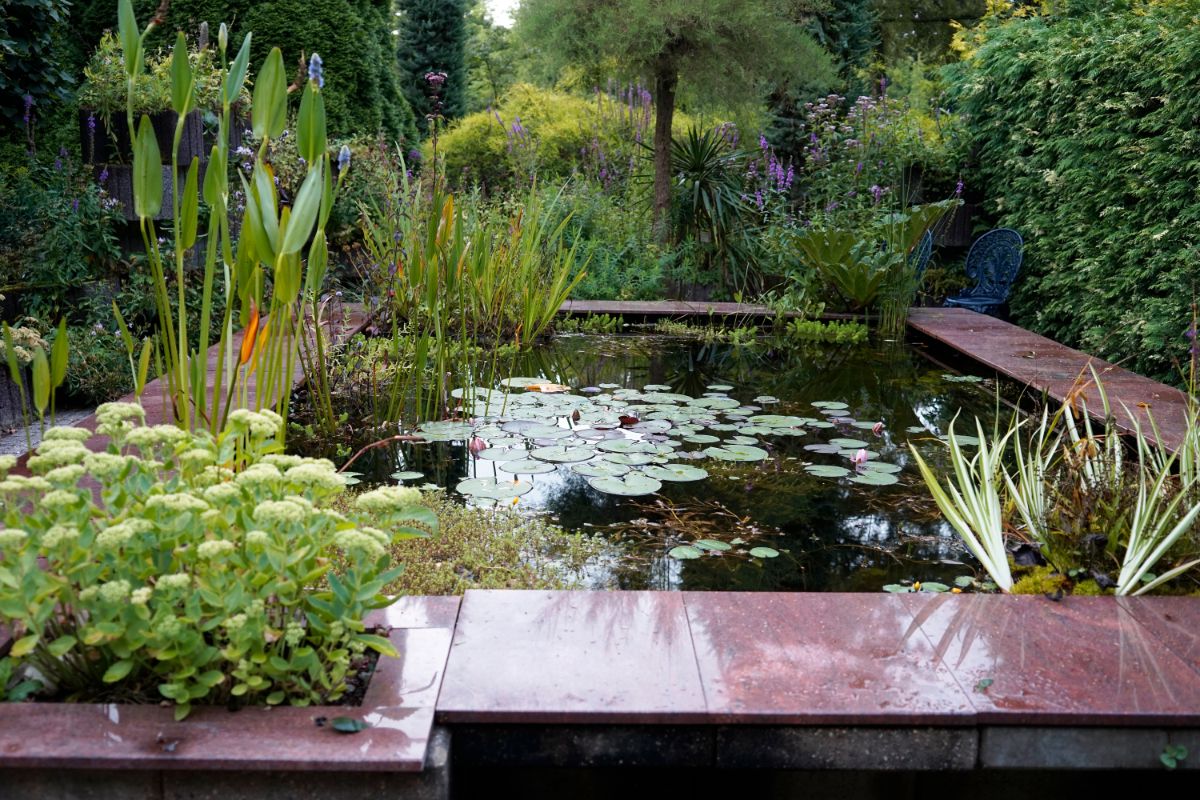
From flowering beauties to attractive foliage plants, we’ve added a variety of aquatic plants to the list below that we hope will inspire you. We’ve also taken care to include both fully submersible and marginal plants, which can be used throughout your pond design. And, for fun, we’ve even thrown in a few edible specimens if you’re interested in growing a water food garden!
1. Cardinal flower (Lobelis cardinalis)
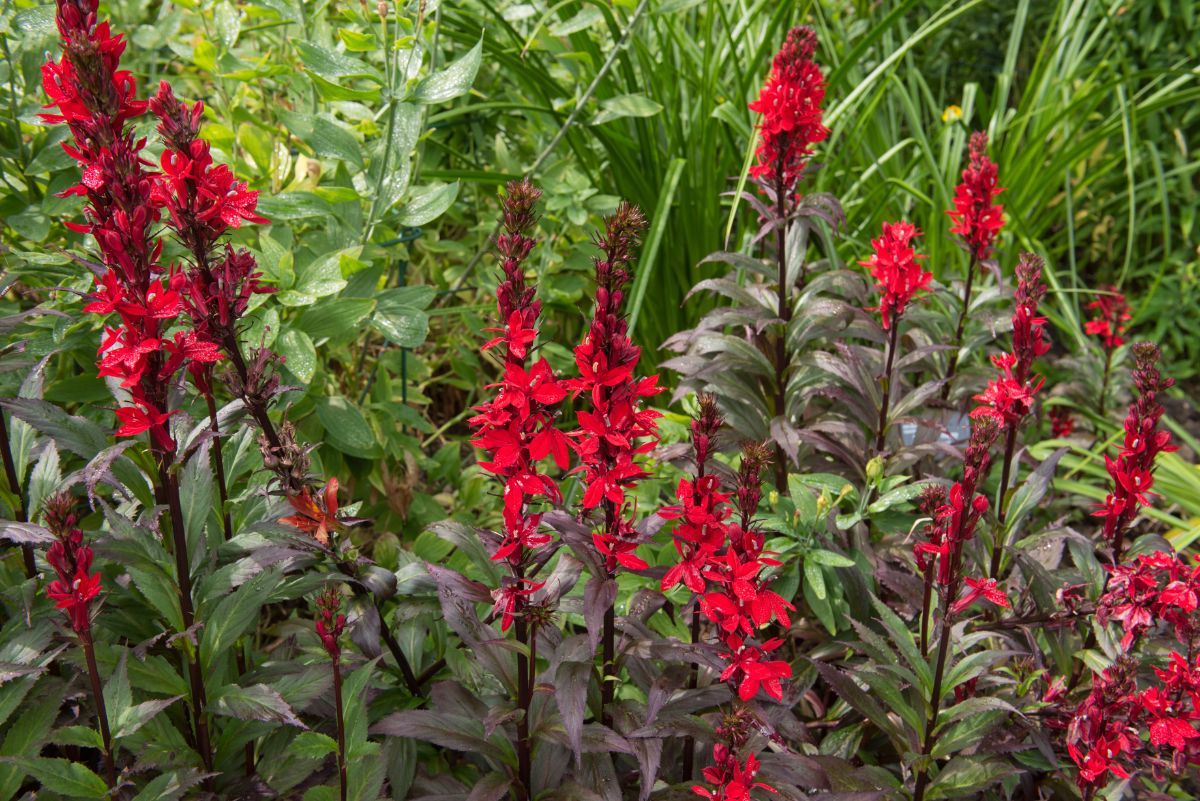
| Plant name: | Cardinal flower |
| Light requirements: | Full sun to shade |
| Water depth: | Marginal plant, up to 2” of water depth |
| Notable features: | Bright flowers attract hummingbirds and butterflies |
| Growing zone: | Zones 3 to 9 |
Native to North America, the cardinal flower is naturally found growing along streambanks and other moist areas, but it works well as an ornamental in miniature ponds too. Named for their vivid red flowers, which are said to resemble a cardinal’s robes, cardinal flowers are very attractive to hummingbirds and may lure other pollinators to your garden pond as well.
In pond settings, cardinal flowers are treated as marginal plants and can be planted along the sides of your pond or up to 2” deep in the water itself. If you want to keep these plants, make sure your pond receives lots of sun and be prepared to deadhead spent blooms regularly to maintain the look of your cardinal flowers. Once mature, cardinal flowers grow to about 2 to 3’ high and make dramatic mid- to background plants.
2. Dwarf papyrus (Cyperus isocladus)
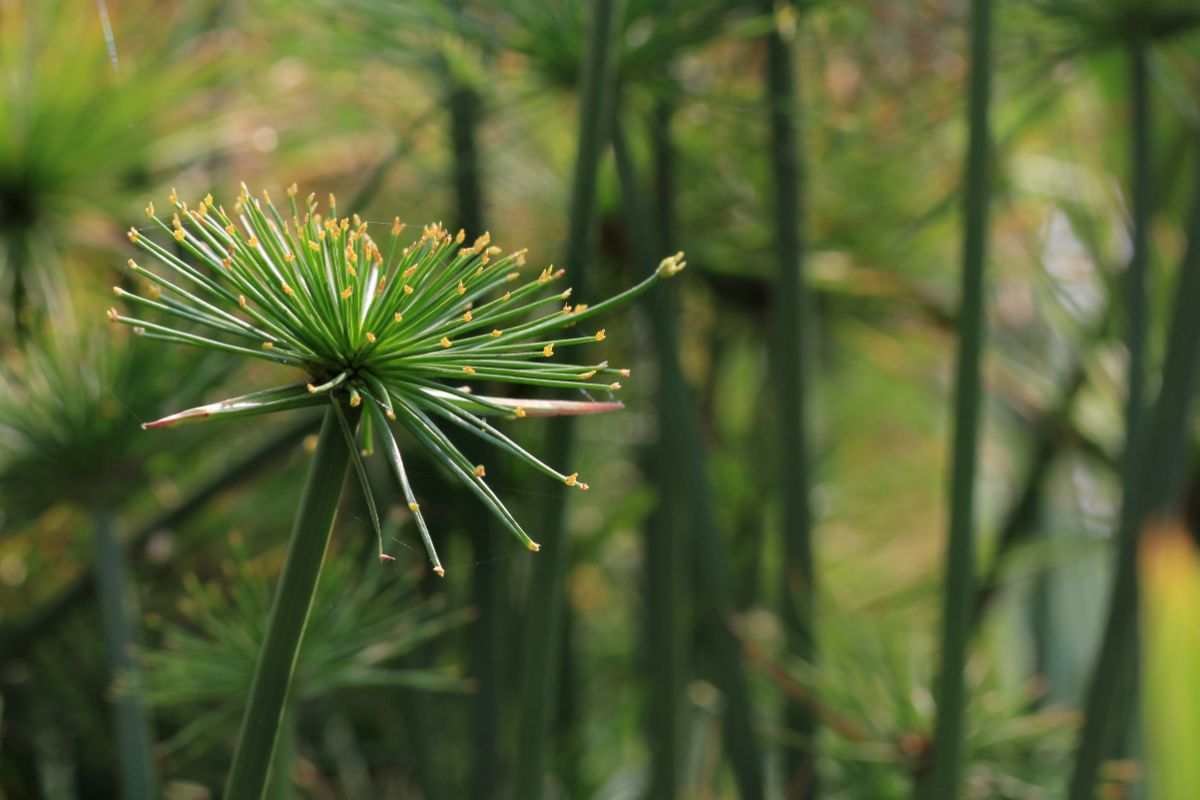
| Plant name: | Dwarf papyrus |
| Light requirements: | Full sun to part shade |
| Water depth: | Marginal plant, up to 12” of water depth |
| Notable features: | Structural form |
| Growing zone: | Zones 9 to 11 |
Papyrus plants are famously known for being used in ancient Egypt as a paper alternative. Today, these striking plants add balance and symmetry to pond landscapes and can provide a nice contrast of texture too. While you can find full-sized papyrus plants that grow up to 16’ high, dwarf papyrus are much more manageable for backyard settings and max out at around 2’ tall.
Papyrus has sturdy stems that are topped off by a playful spray of feathery leaves. These plants grow best in partial shade and are not very cold hardy in cooler climates, where they are mostly kept as annuals. For best growth, papyrus should be planted a little in the water so that about 1 to 4” of water can cover its crowns.
3. Dwarf water lily (Nymphaea spp.)
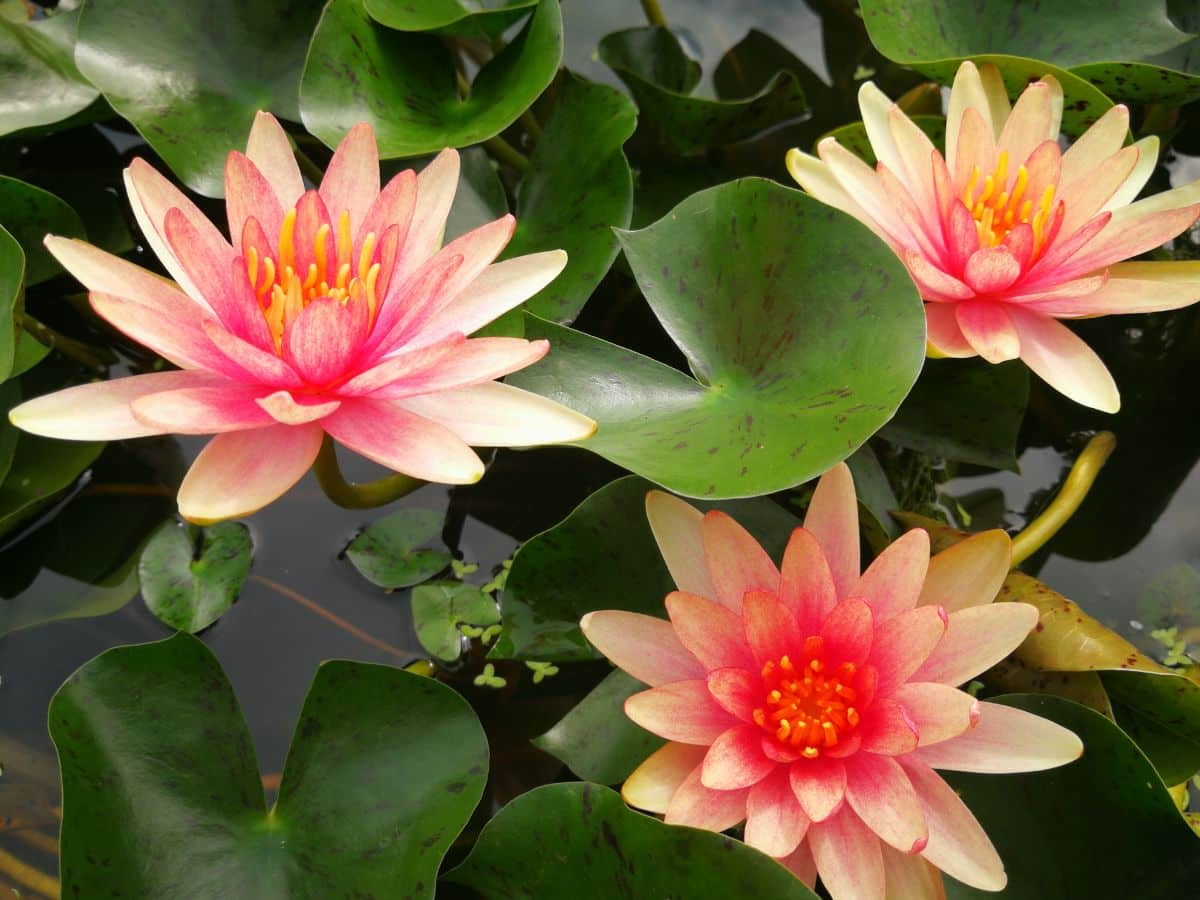
| Plant name: | Dwarf water lily |
| Light requirements: | Full sun |
| Water depth: | 10 to 24” of water depth |
| Notable features: | Large blooms bring in pollinators |
| Growing zone: | Zones 3 to 11, depending on variety |
There’s nothing like a flowering plant to add life and color to your water garden, and water lilies are always a classic choice. There are many varieties of dwarf water lilies to choose from, including ‘Helvola’ or the hardy water lily. These lilies can handle cooler growing locations and may survive as perennials down to zone 4.
Water lilies’ bloom color and size will vary depending on the type of plant you choose to grow. Most commonly, flowers come in purple, yellow, and white, but you can also find flowers in pink, red, and oranges. Water lilies like to be submerged in water, usually from 4 to 18” deep, depending on the cultivar you’re growing.
4. Water hyacinth (Eichhornia crassipes)
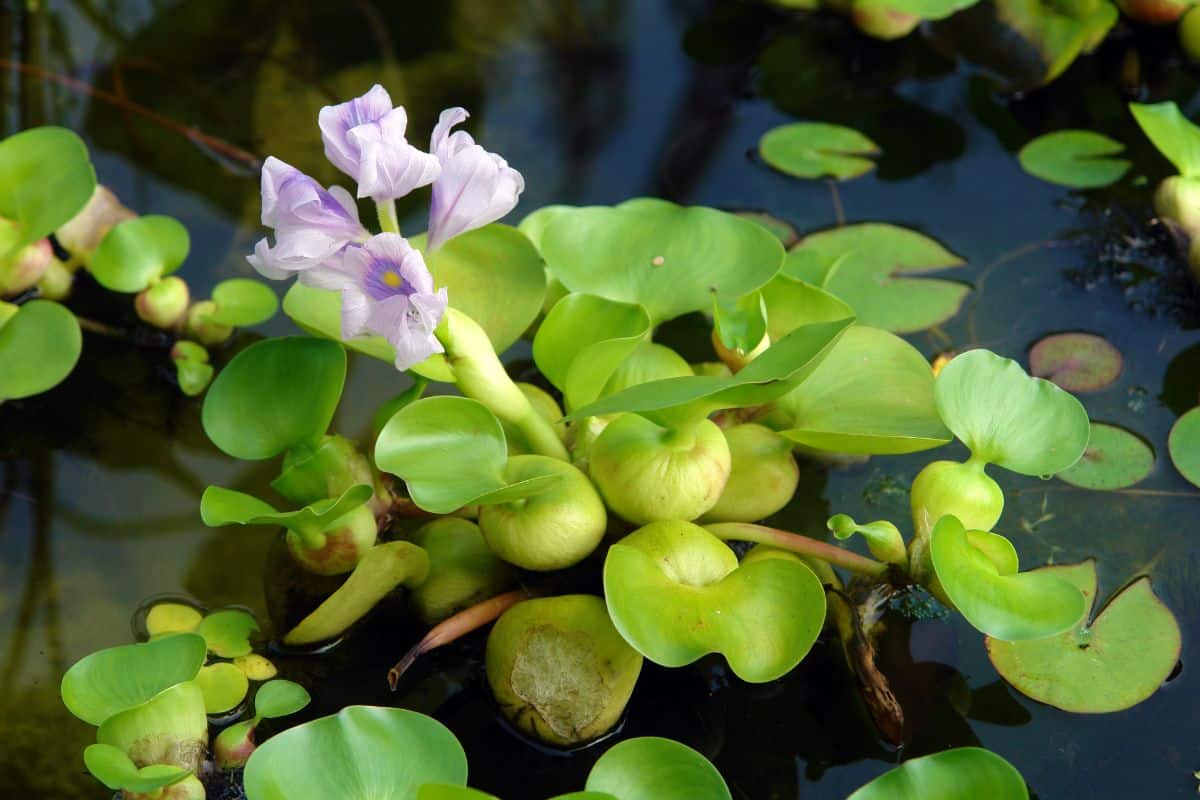
| Plant name: | Water hyacinth |
| Light requirements: | Full sun |
| Water depth: | Floating plant |
| Notable features: | Purple flowers attract bees; can improve water quality |
| Growing zone: | Zones 9 and up, can be grown as annual in cooler climates |
Another popular flowering water plant, water hyacinth, is easy to grow and will reward you with delicate, pastel purple flowers in late summer to early fall. Flowers are brilliantly contrasted against the plant’s finely formed, rounded leaves that add a touch of whimsy to pond designs. Adaptable to full sun or part shade, you’ll get more blooms if you provide your water hyacinth with brighter light.
Water hyacinth is usually planted by scattering plant starts across your pond’s surface and allowing the plants to spread as they choose. As they mature, water hyacinths will rapidly reproduce and may overwhelm smaller ponds, so be prepared to thin them out when they cover about 60% of your pond. In addition to their pretty flowers, water hyacinths can also improve water quality and reduce algae, which can be helpful if you’re keeping fish.
5. Variegated sweet flag (Acorus gramineus variegatus)
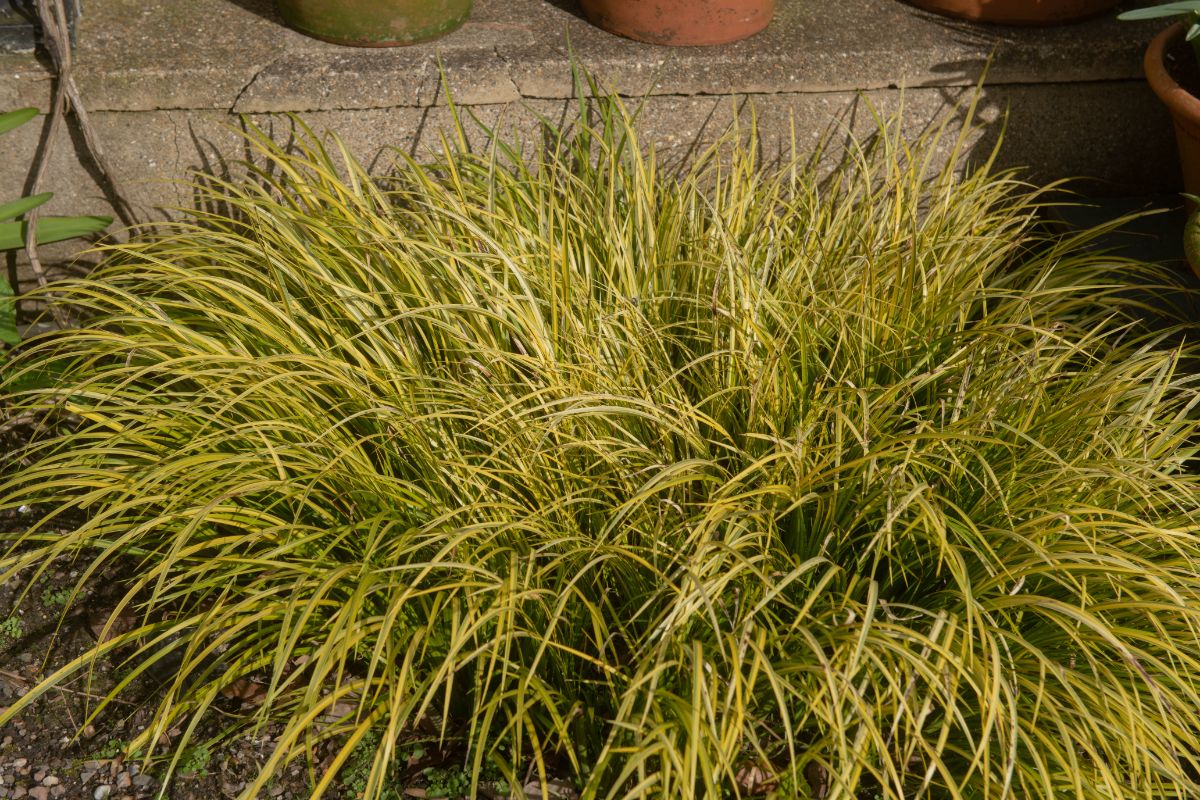
| Plant name: | Variegated sweet flag |
| Light requirements: | Full sun to part shade |
| Water depth: | Marginal plant, up to 6” of water depth |
| Notable features: | Habitat for pond visitors; colorful foliage |
| Growing zone: | Zones 5 to 11 |
With a name like a sweet flag, you may expect a variety of iris; however, the variegated sweet flag doesn’t produce significant flowers. Instead, a sweet flag is primarily kept as an attractive foliage plant. Well-suited for placing along pond margins, a sweet flag can also thrive at different water depths.
Sweet flag produces tufts of variegated, grass-like leaves that can add texture and movement to your pond landscape when the wind blows. These plants grow to about 12” high, and they are cold hardy enough to handle winters in zone 5 and above. Adaptable to full sun or part shade, a sweet flag really comes to life when paired with flowering plants, like water lilies and cardinal flowers.
6. Water lettuce (Pistia stratiotes)
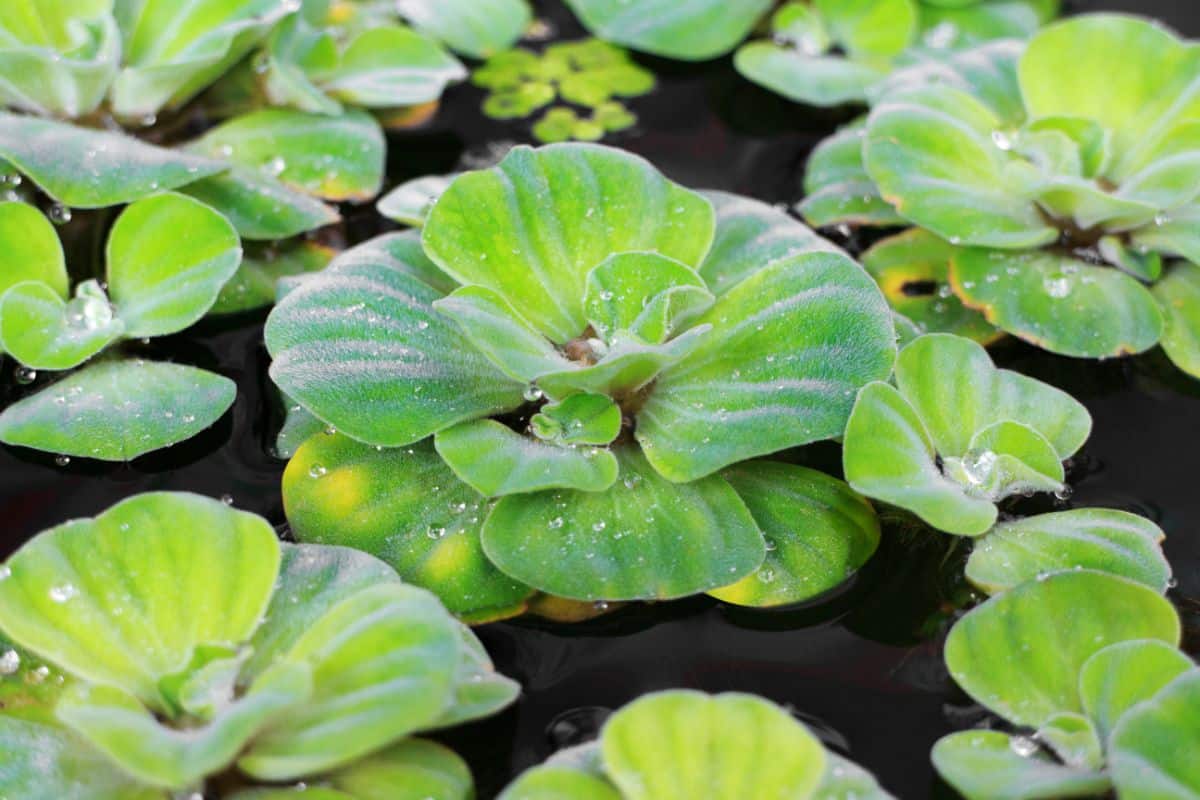
| Plant name: | Water lettuce |
| Light requirements: | Full sun |
| Water depth: | Floating plant |
| Notable features: | Improves water quality; reduces algae growth |
| Growing zone: | Zones 9 to 11, can be grown as annual in cooler climates |
Also known as water cabbage, water lettuce is an easy-going aquatic plant that floats across the water and produces fine, feathery roots beneath the waterline. These plants provide excellent cover for fish in your pond and also make a lovely carpet of green across the water’s surface. While these plants will spread rapidly, they are very easy to thin out if you need to.
Despite its name, water lettuce isn’t edible, but it can clean up water quality and remove harmful compounds from your pond. Because the leaves create excellent shade, they can also reduce algae blooms by blocking out sun. Water lettuce can handle a range of growing conditions, including full sun to part shade.
7. Taro (Colocasia ‘Fontenessii’)
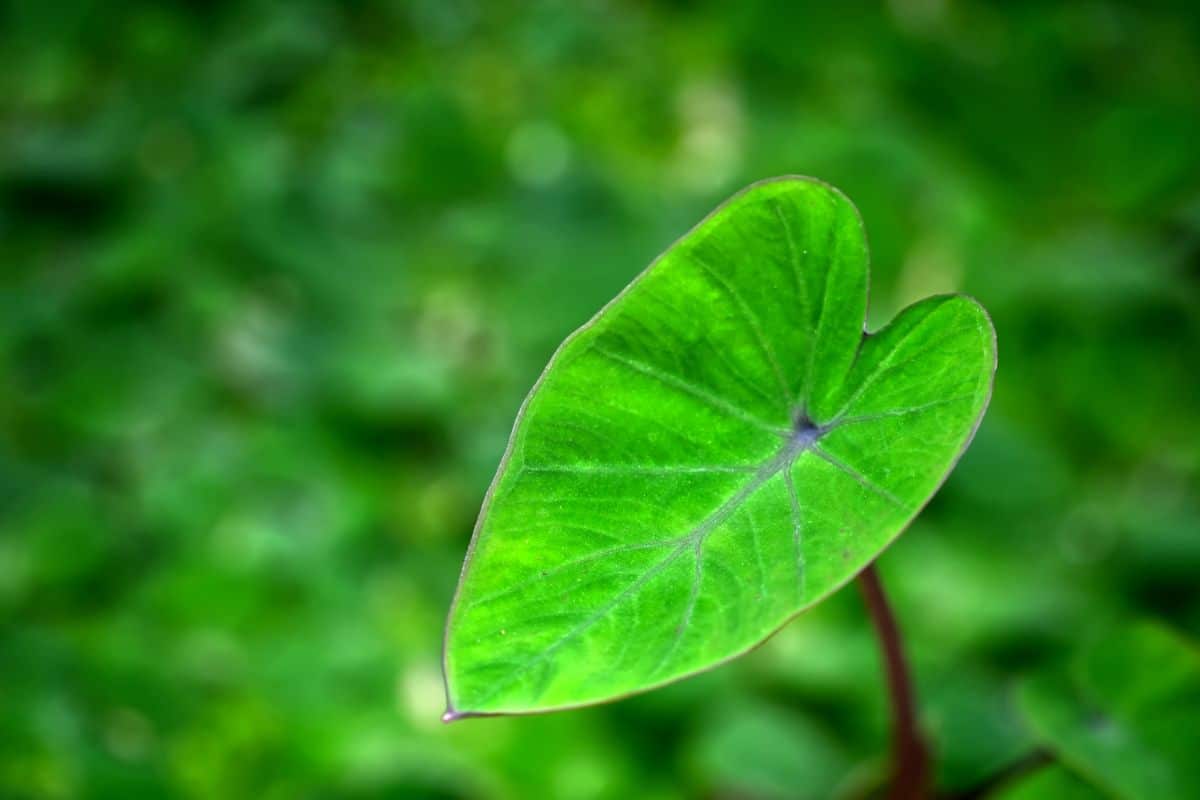
| Plant name: | Taro |
| Light requirements: | Part shade |
| Water depth: | Marginal plant, up to 12” of water depth |
| Notable features: | Colorful foliage |
| Growing zone: | Zones 9 to 11, can be grown as annual in cooler climates |
Red-stemmed taro is a gorgeous foliage plant with arrow-shaped leaves that feature fine, purplish-red veining. These plants lend lots of dramatic flare to pond landscapes, and since they grow to about 3’ tall, they can add lots of vertical interest too. Growing best in full sun, taro can also adapt to part shade.
Not all varieties of taro are edible, so this is not a plant to grow if you want an edible water garden. Instead, taro is mostly kept as an ornamental, and there are lots of varieties to choose from, allowing you to get just the look you’re going for. Taro is a marginal plant that does need soil to grow, but you can add water garden shelves to your pond to help support taro and provide the growth habit it needs.
8. Pickerelweed (Pontederia cordata)
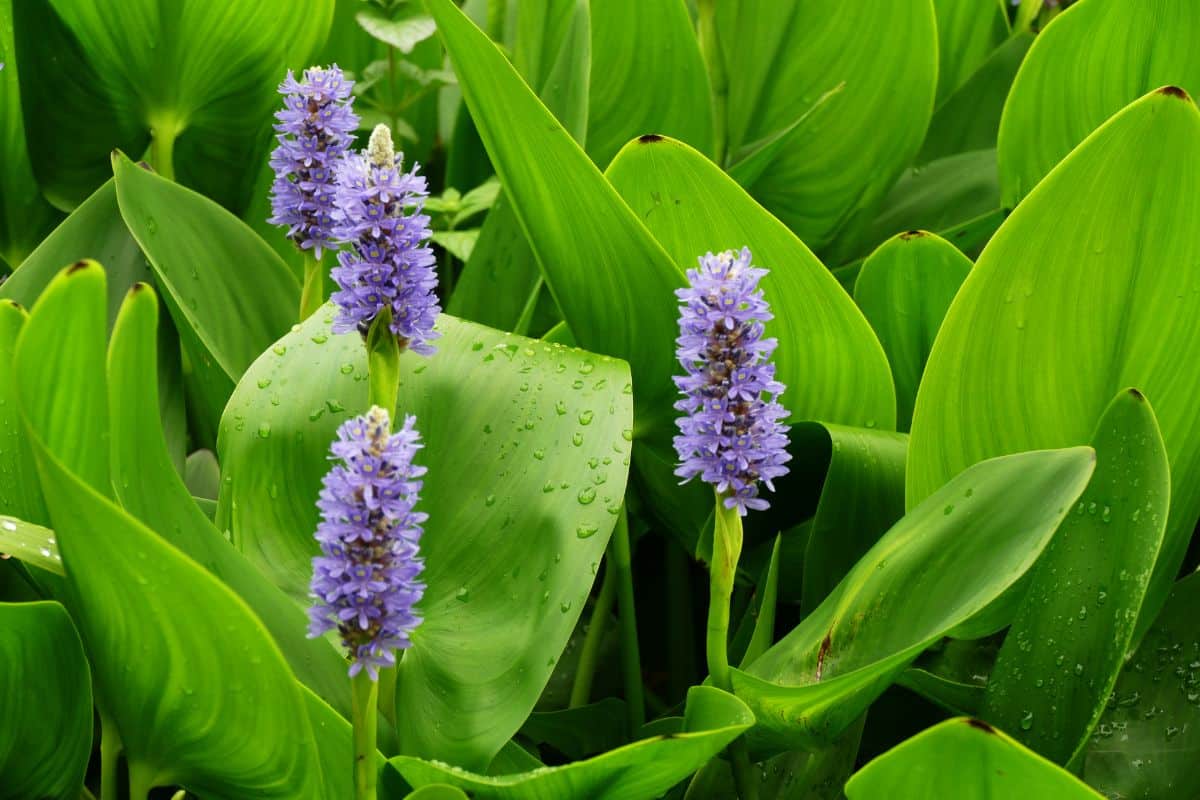
| Plant name: | Pickerelweed |
| Light requirements: | Full sun to part shade |
| Water depth: | Marginal plant, up to 5” of water depth |
| Notable features: | Purple flowers attract hummingbirds, butterflies, and other pollinators |
| Growing zone: | Zones 3 to 10 |
Native to the Americas, pickerelweed is another stunning specimen that blooms showy displays of spire-shaped, purple flowers. Blooms rise about 1 to 2’ above the water’s surface and appear from June through September. These plants are mostly pollinated by bees, but they may also attract butterflies to your mini pond too!
Cold hardy pickerelweed can survive winters in zone 3 and above, and they can handle some shade, although they grow better in sunny locations. As a true pond plant, pickerelweed should be located in shallow water, about 6 to 12” deep. After planting, pickerelweed can spread quickly via rhizomes and produce an established colony of pond plants in no time.
9. Red stemmed parrot’s feather (Myriophyllum Brasiliense)

| Plant name: | Red stemmed parrot’s feather |
| Light requirements: | Full sun to part shade |
| Water depth: | 3” to 6’ of water depth |
| Notable features: | Colorful foliage; oxygenates water; provides habitat for fish |
| Growing zone: | Zones 6 to 10 |
Parrot’s feather is a mat-forming plant that can grow across the water surface and spill over the side of your container water garden for lots of impacts. Feathery leaves are complemented by the plant’s highly contrasting, dark stem, which draws the eye and adds lots of colors. Parrot’s feather can oxygenate pond water, which may be helpful if you’re keeping fish.
Like some other pond plants, a parrot’s feather can be quite invasive if it manages to escape into waterways, so you need to be careful if you want to grow this plant. Never allow even the smallest portion of the parrot’s feather to spread into the environment. If you want to get rid of your parrot’s feather, allow it to dry out fully in the hot sun prior to disposal.
10. Yerba mansa (Anemopsis californica)
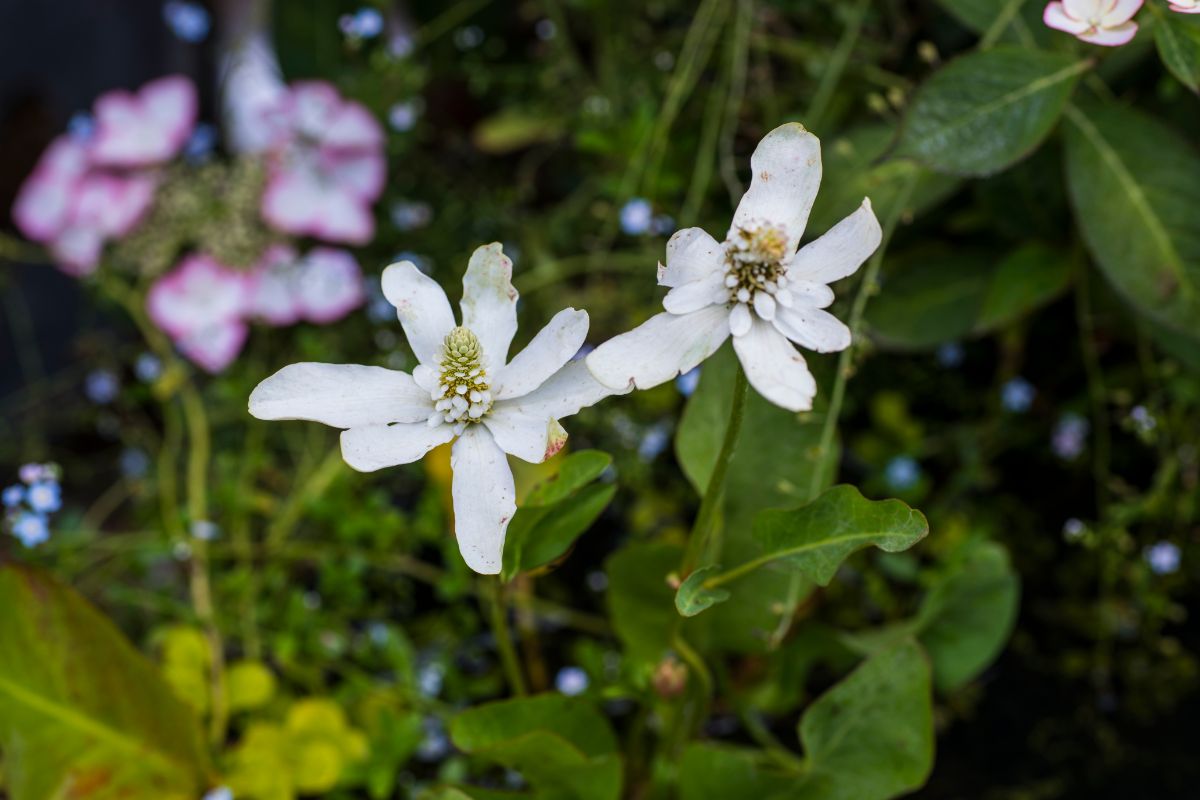
| Plant name: | Yerba mansa |
| Light requirements: | Full sun to part shade |
| Water depth: | Marginal plant, up to 3” of water depth |
| Notable features: | Flowers are fragrant and attract pollinators |
| Growing zone: | Zones 6 to 9 |
Native to the Americas, yerba mansa is a unique-looking plant that offers a delicate, feminine quality to pondscapes. This plant grows more compactly than many other pond plants and rarely stretches above 12” high. In summer, expect your yerba mansa to bloom charming white flowers that emit a slightly peppery aroma.
Yerba mansa was once used as a medicinal plant, although today, it is mostly kept for its ornamental nature and delightful fragrance. Some growers also dry their yerba mansa blooms and use them in bouquets and other floral designs. Pollinators also love yerba mansa flowers, and they’re also a special treat for wild birds when they go to seed.
11. Anacharis (Elodea densa)
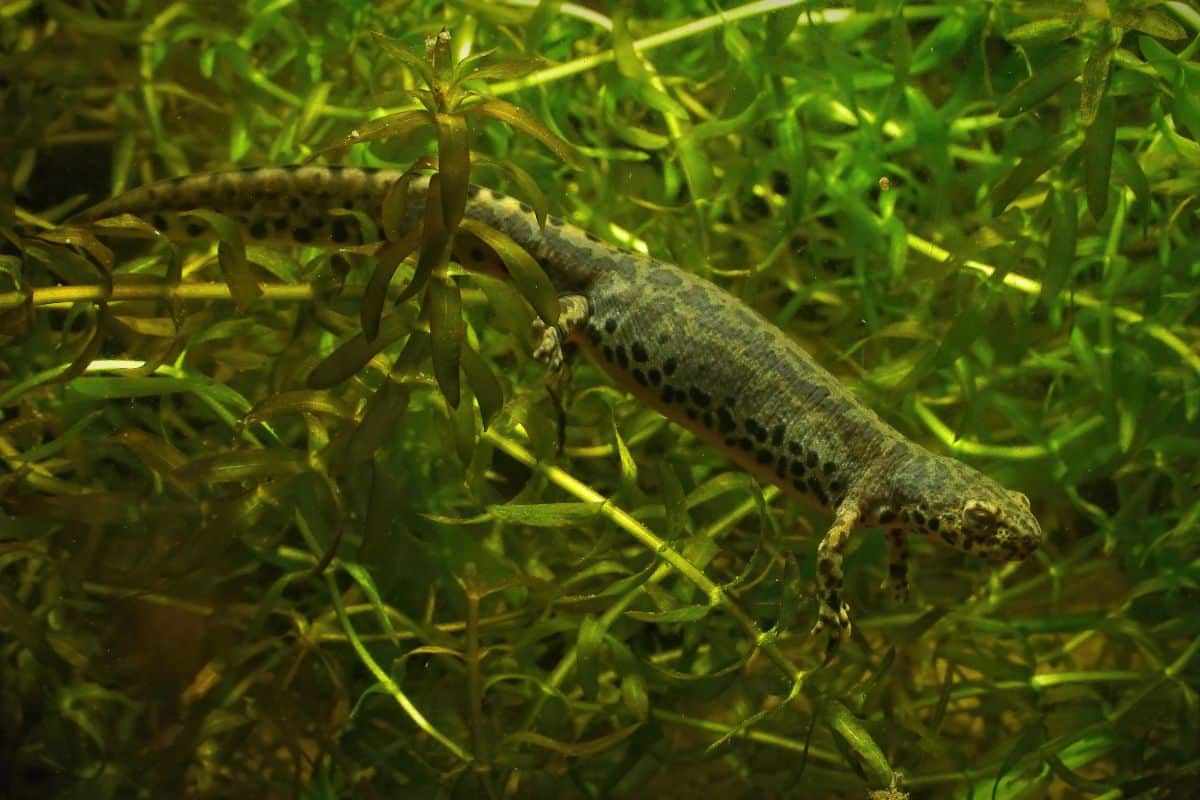
| Plant name: | Anacharis |
| Light requirements: | Part shade |
| Water depth: | Can be submerged up to 13’ |
| Notable features: | Improves water quality; provides shelter for fish |
| Growing zone: | Zones 5 to 10 |
Also known as Brazilian waterweed, anacharis produces stems brimming with whorled leaves that can range from bright green to a darker color that resembles seaweed. These plants are often used by botanists as a teaching tool, as their thin leaves make it very easy to observe plant cell structures under a microscope. But these plants can be beneficial in small ponds, too, and have been used to decontaminate waterways of harmful pollutants.
Anacharis are adaptable plants that can rapidly spread and grow up to 10’ in the wild, although they can be kept smaller with pruning. Like a parrot’s feather, anarcharis can be very invasive, so you will need to manage it well in your pond setting. To plant, anacharis can be simply thrown into pond water, or you can plant stems deliberately in your substrate for a more refined look.
12. Watercress (Nasturtium officinale)
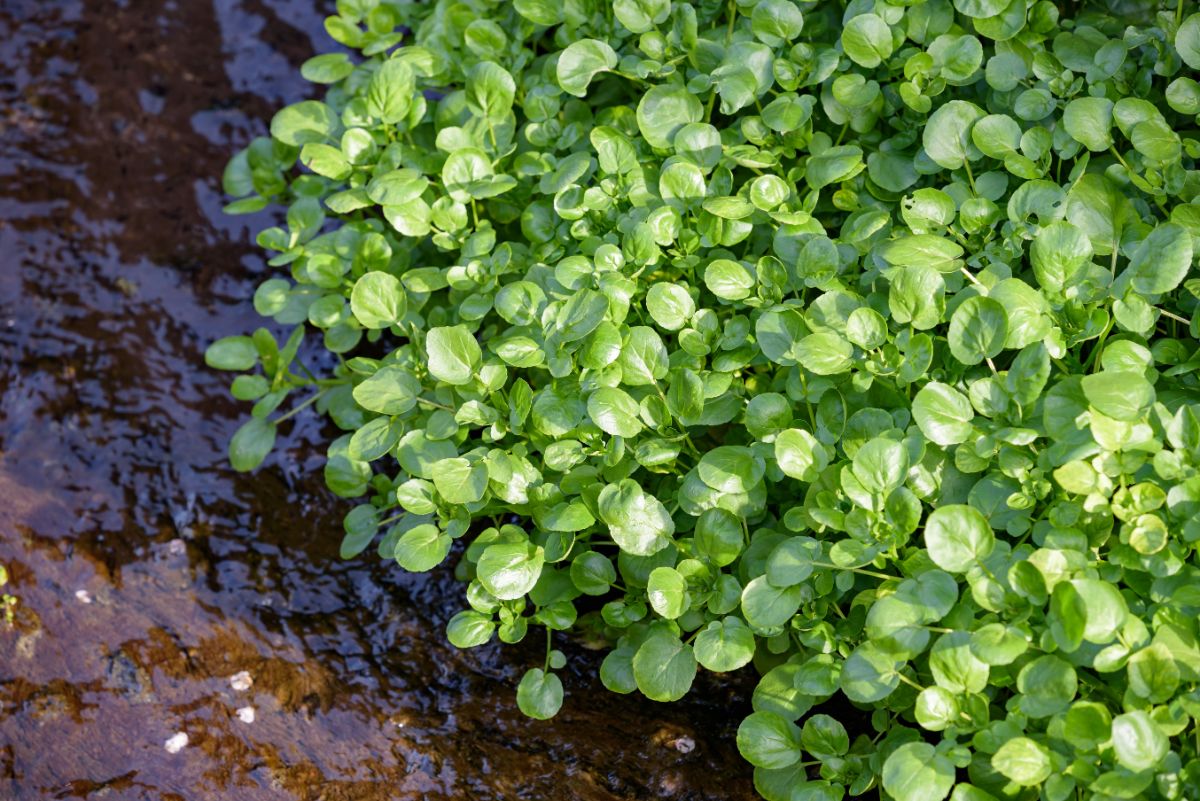
| Plant name: | Watercress |
| Light requirements: | Part shade |
| Water depth: | Shallow water, 2 to 4” of water over roots |
| Notable features: | Edible |
| Growing zone: | Zones 3 to 11 |
If you like the idea of keeping a pond but you want your pond to work for you, you can create an edible water garden. Different water-loving plants can be cultivated in pond settings, and one of the easiest to grow is watercress. Watercress is often used in salads and sandwiches and has a delightfully bright flavor with notes of pepper.
Watercress can be grown in buckets, but it prefers gently moving water, so if your pond has a filtration unit, your watercress should grow beautifully. These plants prefer full sun, and they should never be allowed to dry out since they need consistently moist roots. Watercress is very easy to grow from seed too, which makes it one of the most affordable pond plants on the market.
13. Water forget-me-not (Myosotis scorpioides)
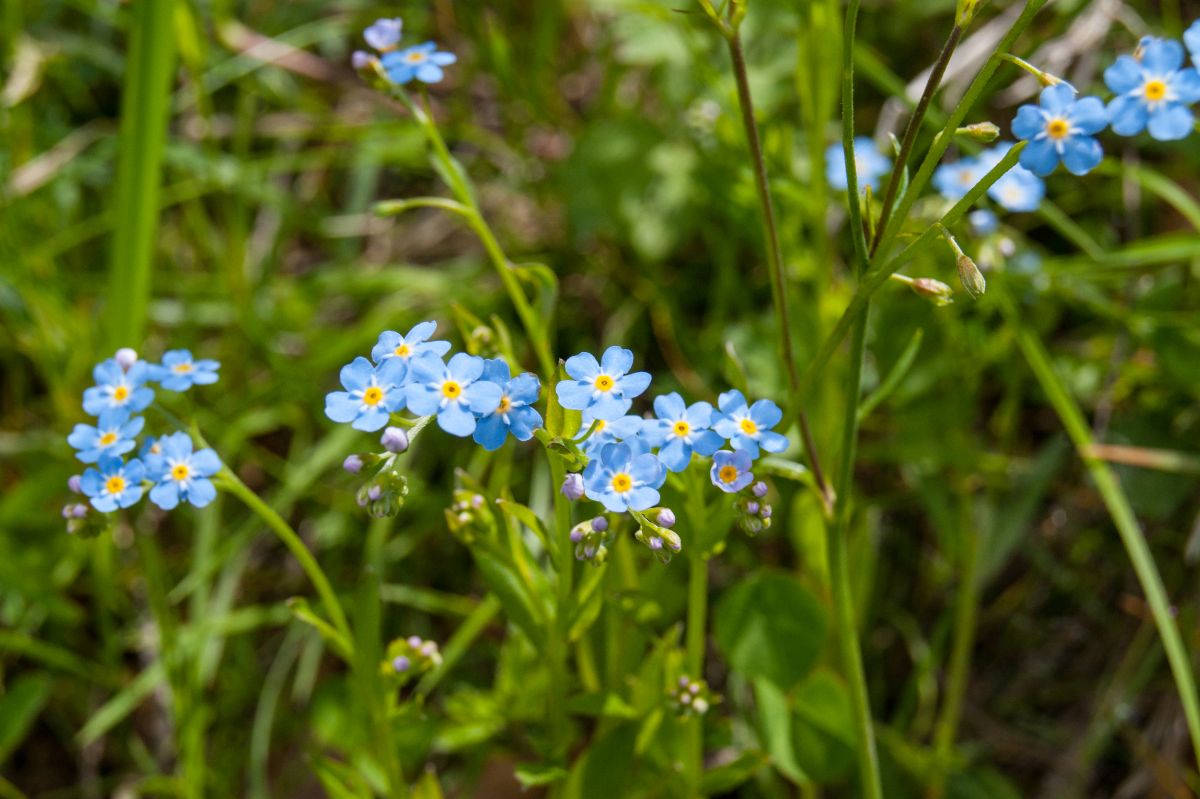
| Plant name: | Water forget-me-not |
| Light requirements: | Full sun to part shade |
| Water depth: | Marginal plant, up to 4” of water depth |
| Notable features: | Colorful flowers attract pollinators |
| Growing zone: | Zones 5 to 9 |
Like standard forget-me-nots, these aquatic plants bloom delicate, pale blue flowers with contrasting yellow centers. A member of the borage family, water forget-me-nots are native to Europe and Siberia, although they have become naturalized in many areas throughout the globe. As an ornamental plant, water forget-me-nots are perfect for boggy areas or rain gardens, but they should not be sown in water deeper than 4”.
Flowers initially produce pink buds that turn blue as they age. Bloom time begins in spring but can last until fall in mild climates. Left alone, water forget-me-nots will spread, and their dense and low-growth habit provides the perfect hiding spot for frogs, newts, and other aquatic creatures.
14. Wasabi (Eutrema japonicum)
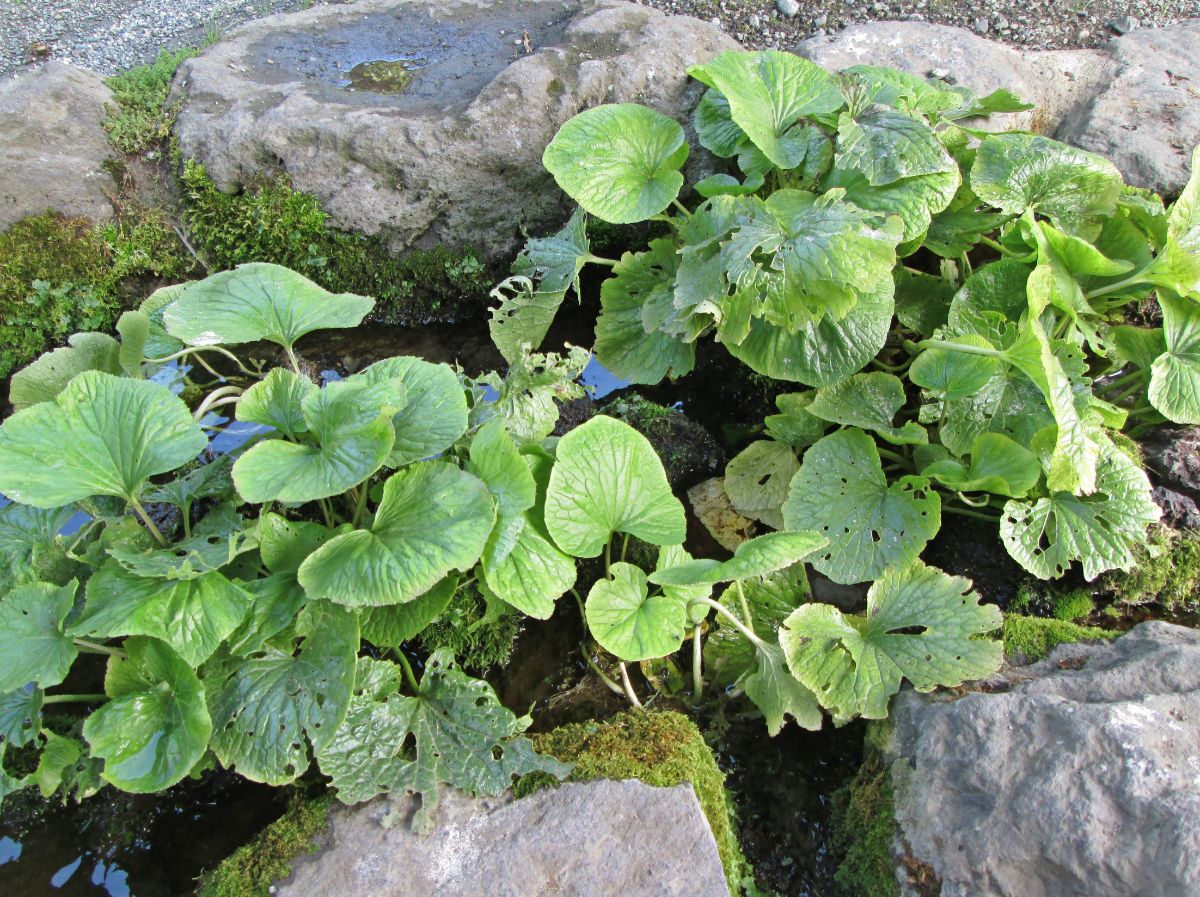
| Plant name: | Wasabi |
| Light requirements: | Shade |
| Water depth: | Marginal plant requires consistently moist soil |
| Notable features: | Edible |
| Growing zone: | Zones 8 to 10, may be able to be overwintered indoors with proper care |
Wasabi isn’t the first plant most gardeners think of when they consider pondscaping, but it can be a rewarding and profitable plant to grow. If you love ordering sushi, you’re probably very familiar with wasabi, which is produced from this plant’s roots. However, most store-bought and restaurant wasabi is made from horseradish and green dye, as real wasabi doesn’t have a long shelf life.
In nature, wasabi grows along shaded riverbanks, and it prefers wetter soil than most other plants. That said, it’s not a true aquatic plant, and it shouldn’t be submerged, although it can work in container gardens or when sown along pond margins where soil remains consistently damp. Wasabi can be a tricky plant to grow, so it’s not well-suited for beginners, but more seasoned gardeners may want to give this plant a try!
15. Lotus (Nelumbo nucifera)
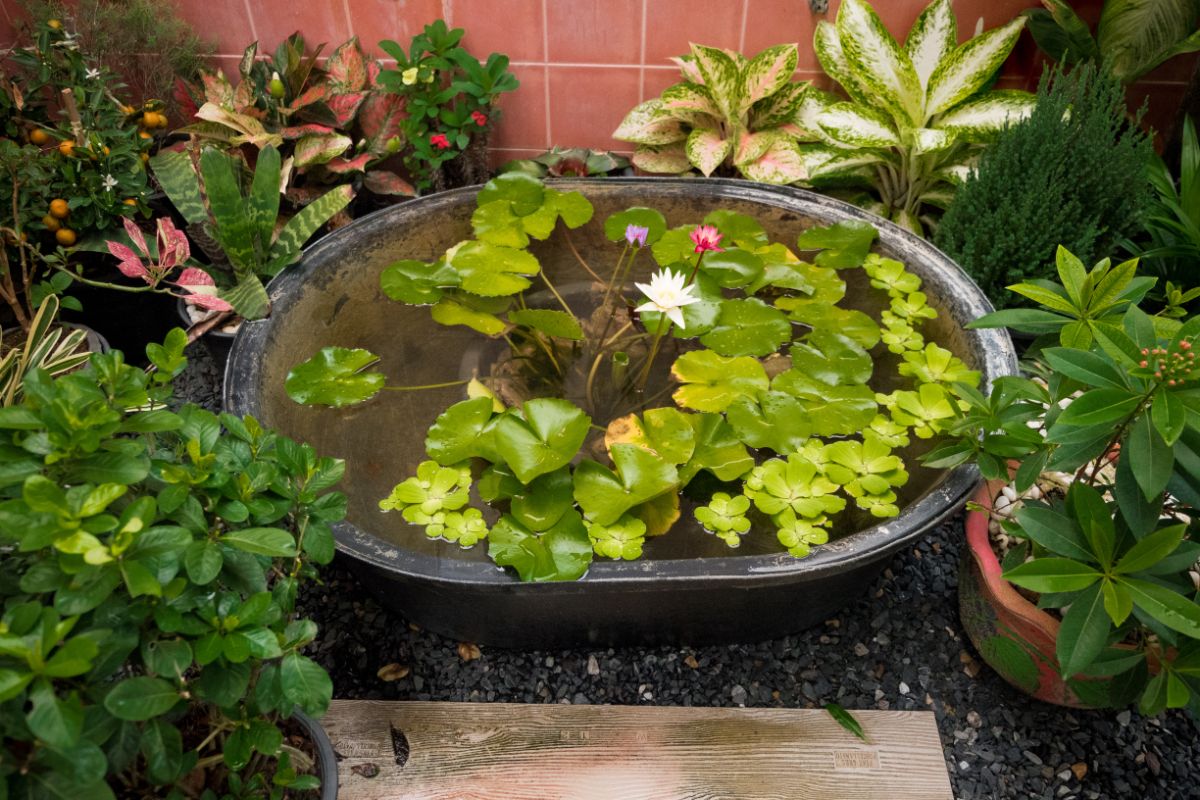
| Plant name: | Lotus |
| Light requirements: | Full sun |
| Water depth: | Tall varieties can be grown in 18” of water or deeper |
| Notable features: | Edible; colorful and fragrant flowers attract pollinators |
| Growing zone: | Zones 4 to 10 |
Lotus are highly symbolic plants that are sacred in some cultures. These plants are prized for their beautiful blooms, which emerge above the muddy soil that births them – a symbol of transcendence. As ornamentals, lotus is sure to dazzle with their lively flowers that usually appear in pinks, white, and yellows, but they can be found in blues and purples too.
Beyond their beauty, lotuses can also be cultivated for their edible roots. Fried, stir-fried, or cooked into soups, lotus root is a staple in Asian recipes and has a mild sweetness and crunchy flavor that is somewhat similar to jicama or celery. To grow lotus, provide your plants with bright sun and sow plants in water that is at least 12” deep.
16. Corkscrew rush (Juncus effusus ‘spiralis’)
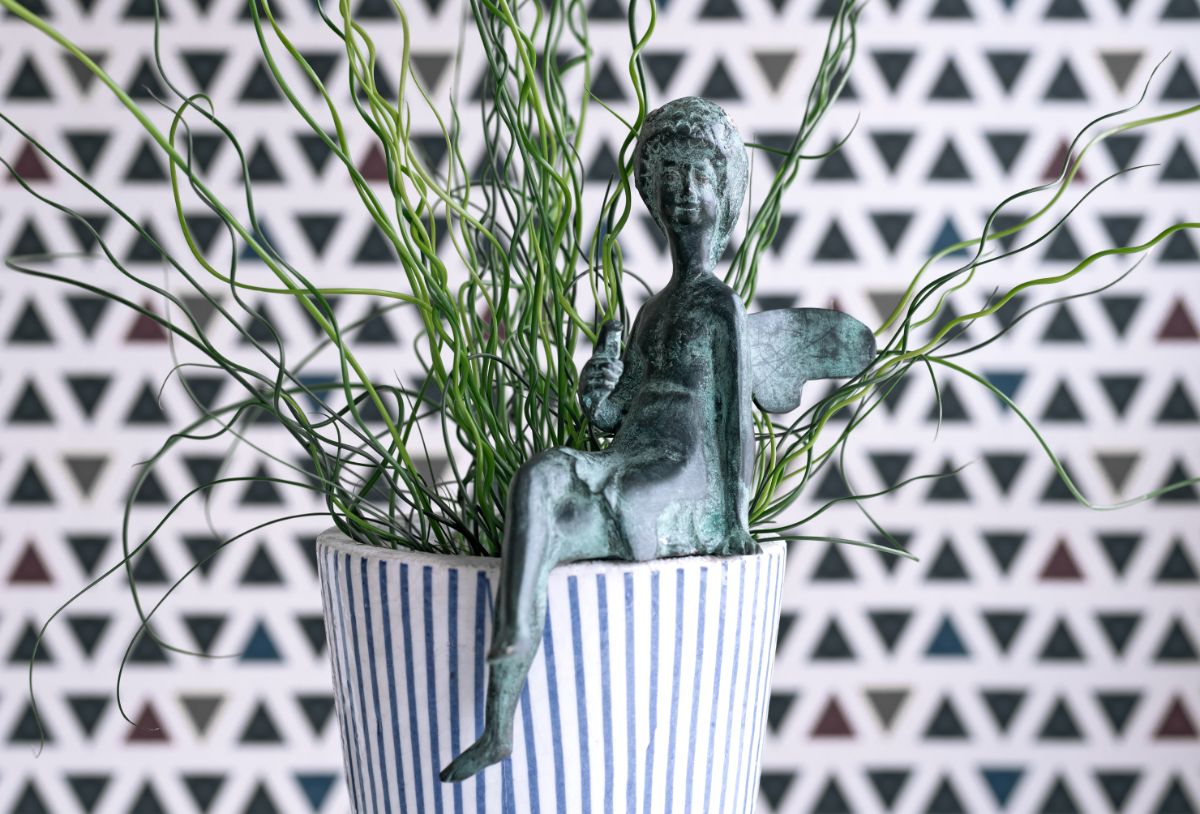
| Plant name: | Corkscrew rush |
| Light requirements: | Full sun to part shade |
| Water depth: | Marginal plant, up to 4” of water depth |
| Notable features: | Textured leaves |
| Growing zone: | Zones 4 to 9 |
Corkscrew rush is a funky foliage plant with thin, curled leaves that add lots of texture and structure to pond settings. This attention-getter is low maintenance, too, so it’s a plant to try if you’re new to aquatic plants and need a bit of practice.
Corkscrew rush can handle full sun to part shade, and its cold hardy nature means it can grow in climates as chilly as zone 4. These plants don’t like a lot of water depth, though, so they should be planted near the margins of your pond or sown on pond shelves to give them a bit more height. Since each leaf grows differently, expect a bit of variety with your plant, with some leaves forming tighter spirals than others.
17. Creeping Jenny (Lysimachia nummularia ‘Aurea’)
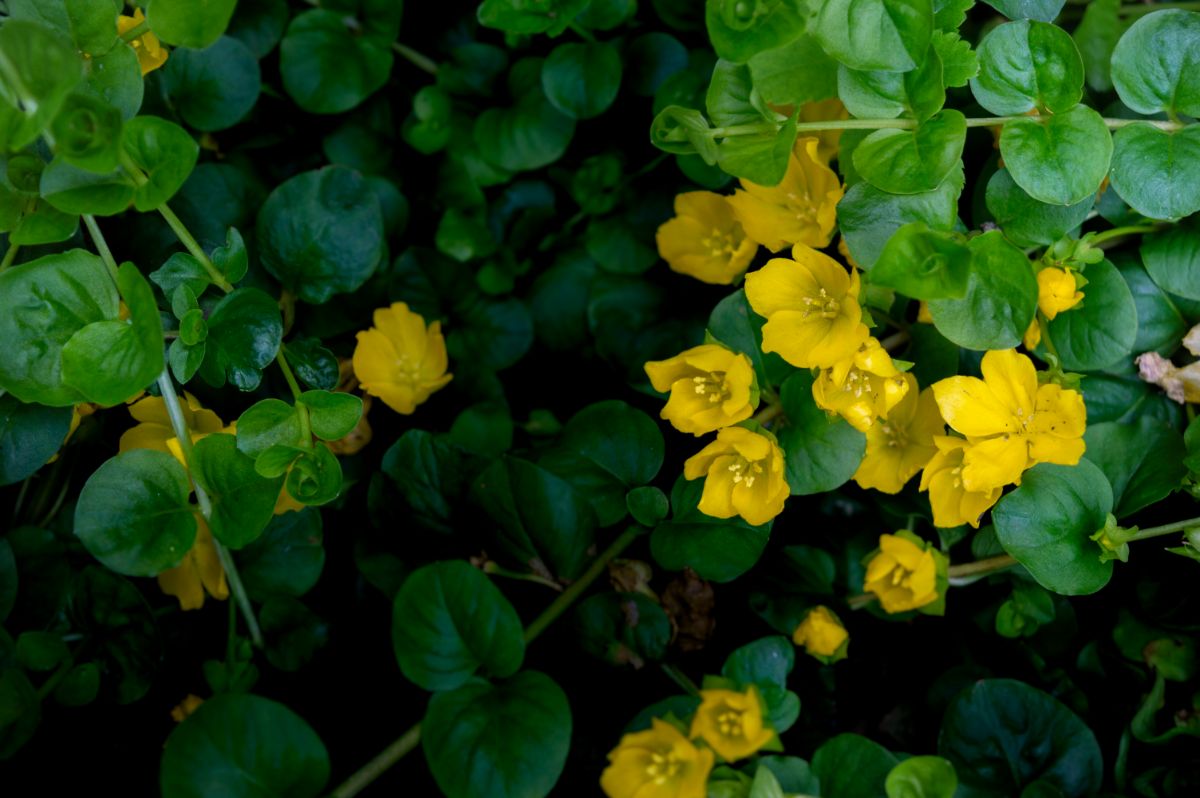
| Plant name: | Creeping Jenny |
| Light requirements: | Full sun to part shade |
| Water depth: | Marginal plant, up to 1” of water depth |
| Notable features: | Colorful flowers attract pollinators |
| Growing zone: | Zones 3 to 9 |
Creeping Jenny is often used as groundcover in garden beds, but this water-lover can adapt to pondscapes too. Known for its bright, chartreuse leaves that have rounded edges, creeping Jenny is a spreading plant that can be tucked into rocky pond edges or allowed to crawl over the side of container water gardens. But while this plant loves moist soil, it shouldn’t be planted in water that’s deeper than 1”.
Also known as moneywort, creeping Jenny’s stems will float gently on the water surface if you allow this plant to trail naturally. This can look particularly pretty if your pond has a gentle current. In summer, creeping Jenny blooms charming yellow flowers that are sure to delight as well!
Summary
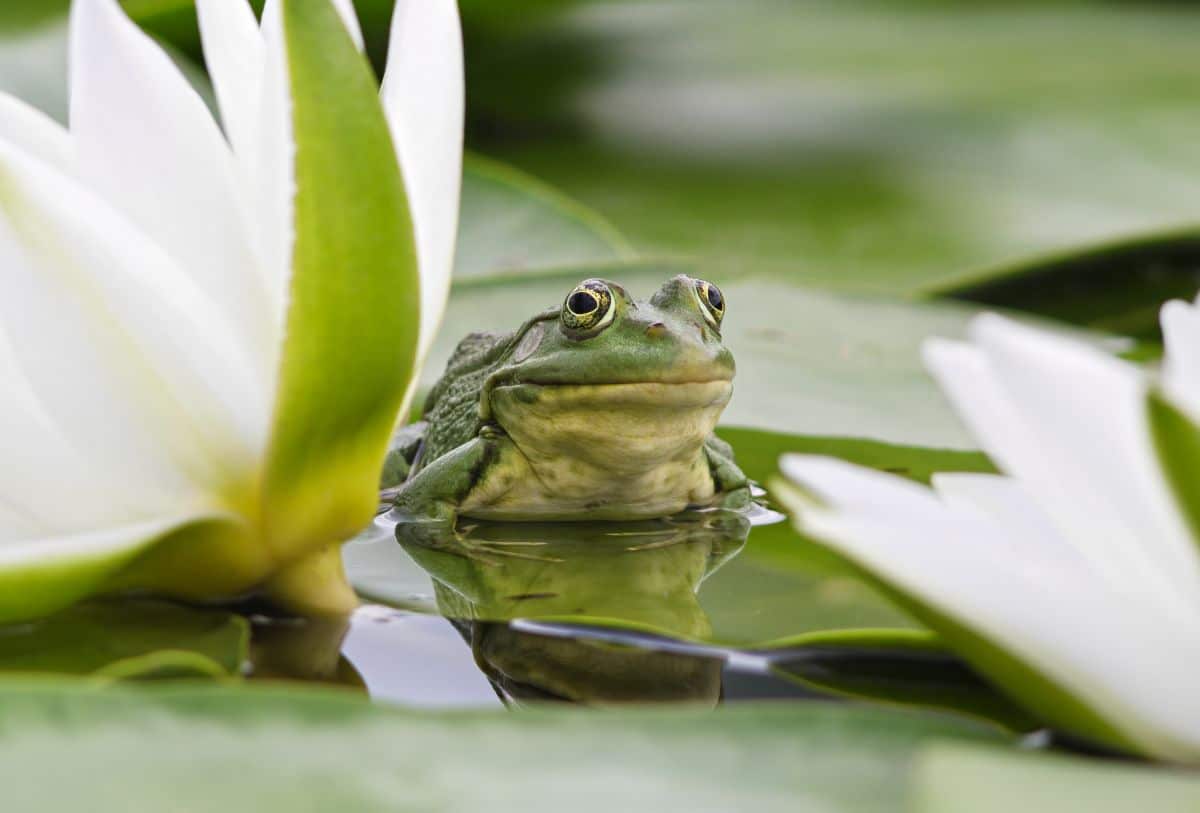
As with any landscape design, if you want to create a lush water garden, it’s important to think about all elements of your pond. Consider both the center and the margin of your pond, and choose a few plants for each area if you have the space for it. Floating plants, like water lettuce, can be particularly useful as they fill up negative space and create a more cohesive look throughout your design.
Even if you are working with just a small container water garden, pint-sized plants like yerba mansa or watercress can adapt to more limited spaces. So let inspiration take you and get creative with your miniature pond. Both local wildlife and your garden visitors will love the new addition to your landscape!
If you’d like to learn more about plants that can be grown in water, check out our full guide here for even more inspiration.

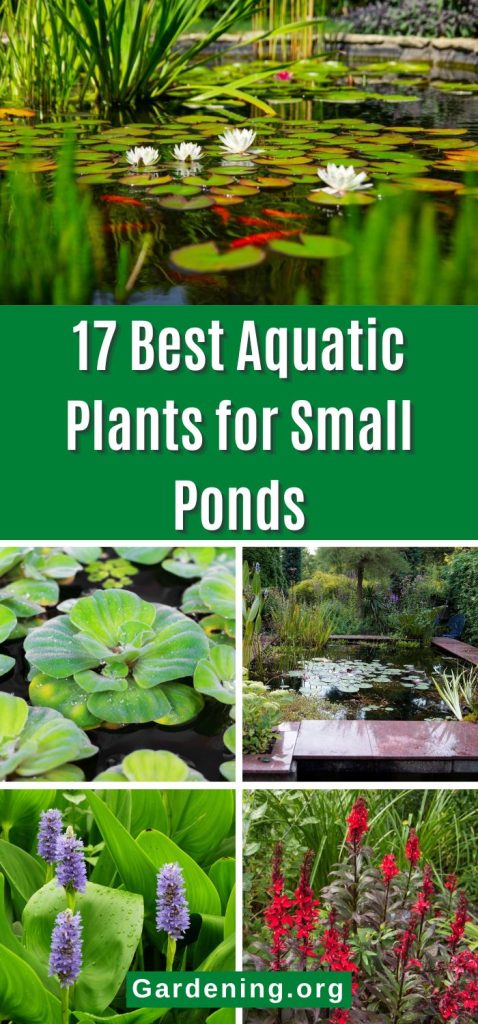
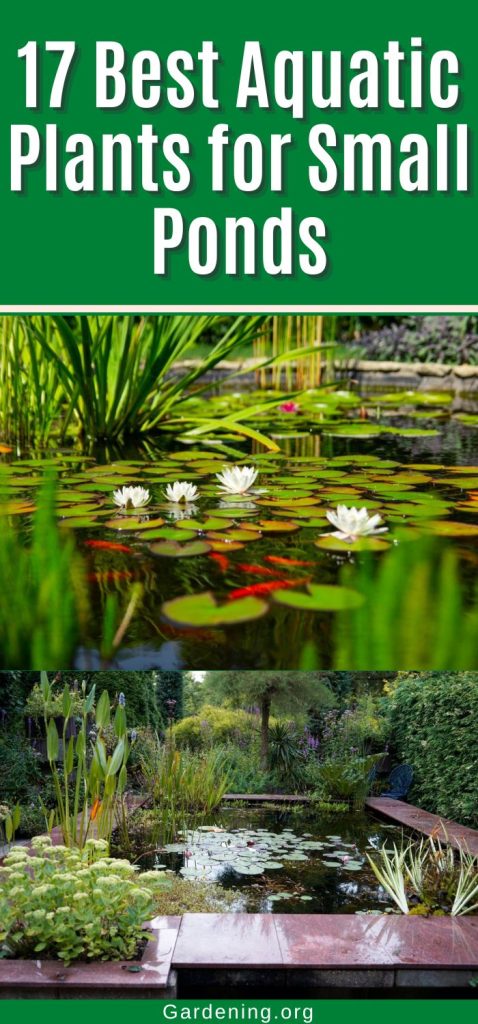
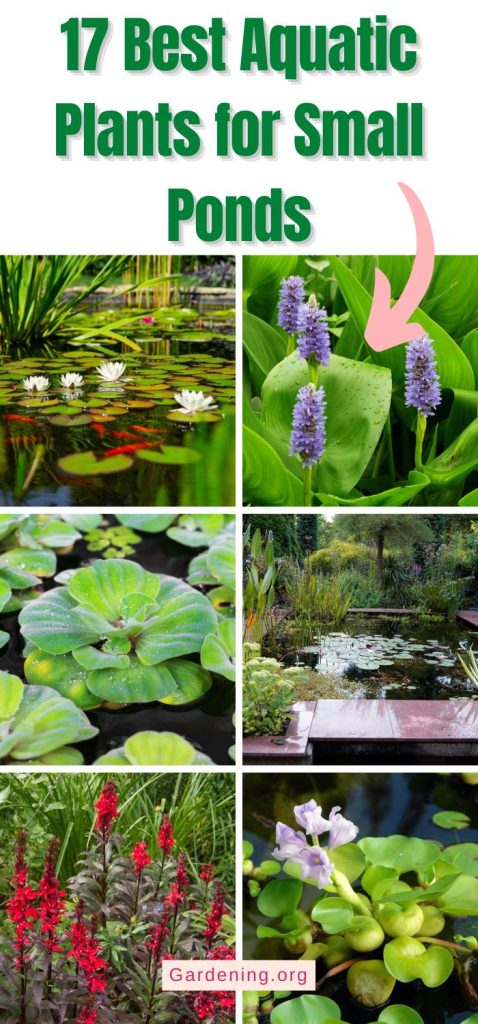
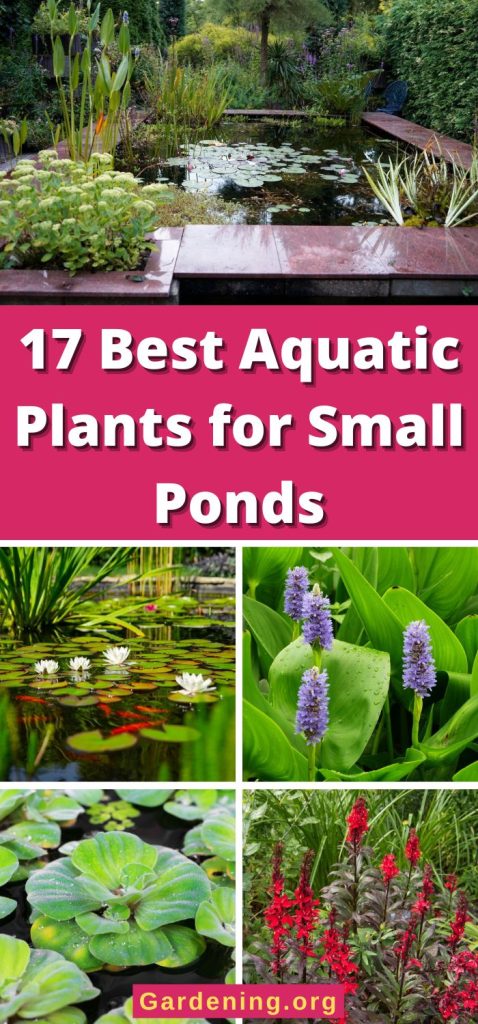
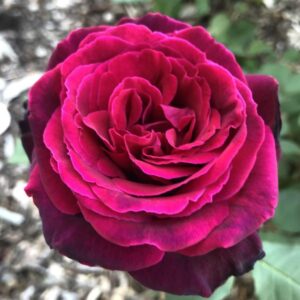
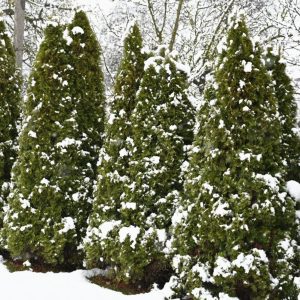

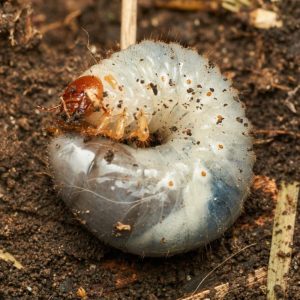
Amy
Where does one purchase these very specific plants?